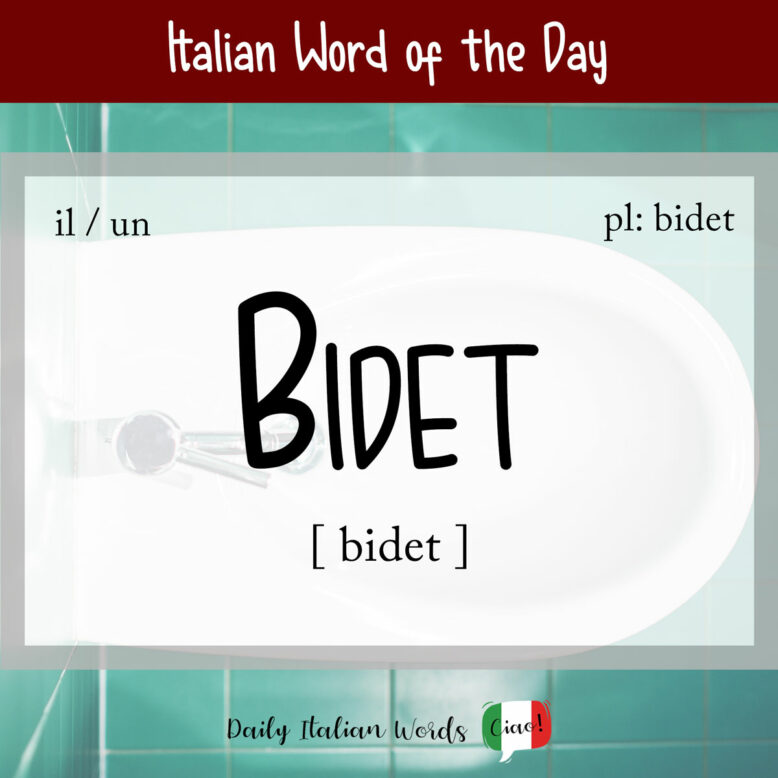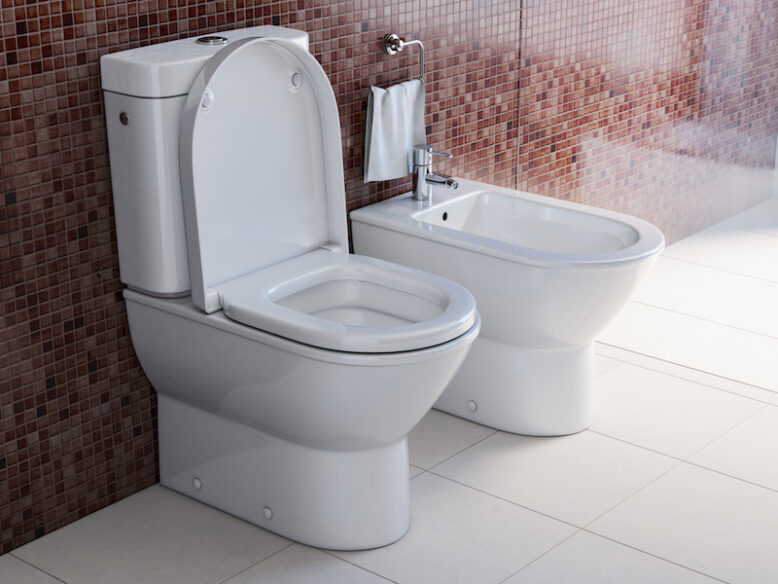The moment I entered an Italian bathroom for the first time, I was taken aback by the presence of a peculiar fixture resembling a secondary sink placed next to the toilet. Despite being completely and utterly unfamiliar with it, it didn’t require much imagination to deduce its true purpose!
The bidet, pronounced as bidè in Italian, is an omnipresent piece of bathroom furniture found in all households, bed and breakfasts, and hotels across the Italian peninsula. It serves as a dedicated sink for personal hygiene, especially after doing a so-called “number two”.

The word bidet originated from the French language, where it meant pony. In fact, in Old French, the verb bider meant “to trot.” The etymology of the word stems from the concept that one “rides” or straddles a bidet similar to riding a pony.
It is a masculine invariable noun that takes the following definite and indefinite articles:
- il bidet = the bidet
- i bidet = the bidets
- un bidet = a bidet
- dei bidet = (some) bidets

The earliest documented mention of the bidet in Italy dates back to 1726, although its usage did not become widespread until after the Second World War. Initially, it was commonly found in the bedroom alongside the chamber-pot and the marital bed. However, as convenience became a priority, it was eventually relocated to the bathroom, near the toilet bowl, making it easier to fill and drain.
Non avevo mai visto un bidet prima di visitare l’Italia.
I’d never seen a bidet before visiting Italy.
Did you know that…?
Bidets have been legally mandated in buildings in Italy for nearly half a century! Article 7 of a Ministerial Decree issued on July 5th, 1975 specifies that “in each dwelling, at least one bathroom must be equipped with the following fixtures: a toilet, a bidet, a bathtub or shower, and a sink.”
Many Italians simply cannot imagine life without a bidet. Not using one is almost akin to not brushing one’s teeth! So, those who move abroad often resort to extreme measures to keep their nether regions clean after a bowel movement. According to this article (and the rich comment section), many Italians will go as far as to stand in the bathtub and use the shower head, empty a bottle of water over the area as if it were a running faucet, carry around wet wipes, and even purchase a portable bidet.
Some other uses for the bidet include washing one’s feet, treating haemorrhoids or urogenital infections, and cleaning oneself after intercourse. It is also more environmentally friendly than using wads of toilet paper, and less expensive too!
Heather Broster is a graduate with honours in linguistics from the University of Western Ontario. She is an aspiring polyglot, proficient in English and Italian, as well as Japanese, Welsh, and French to varying degrees of fluency. Originally from Toronto, Heather has resided in various countries, notably Italy for a period of six years. Her primary focus lies in the fields of language acquisition, education, and bilingual instruction.


